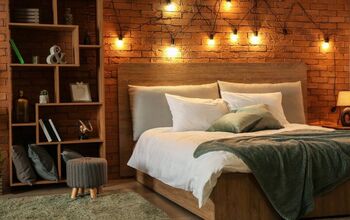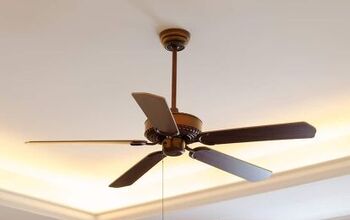How To Get Natural Light Into A Room Without Windows

Natural light can improve your mood and boost creativity and cognitive function. It’s also often a significant selling point when looking at houses; people love lots of windows that let in natural light. But how can you get light into a room without windows?
You can get the look of natural light in a room without windows using reflective paint colors and surfaces and strategically placing mirrors. Avoid using thick, heavy lamp shades and bring some outdoor elements, like plants and flowers, into the space. A light color scheme will help keep things bright. You can also mimic natural light with a circadian lighting system.
If you’re working with a windowless room, you can achieve a bright, airy atmosphere. You’ll just need to get a bit creative and make sure you don’t skimp on artificial lighting sources.
10 Bright Ideas To Fake Natural Light Without Windows
Short of installing skylights or exterior windows, it’s difficult to get actual natural light into a windowless room. However, you can achieve a similar look and still create an ideal lighting scheme that makes you happy.
1. Choose A Light Color Scheme
Avoid dark colors in a room without windows if you’re trying to brighten the space. This dramatic look might work for a moody library or home theater, however, an overly dark color scheme will tend to absorb most of the light, making things seem even darker.
And this practice doesn’t just apply to your paint colors. Also, choose lighter tones for furniture, textiles, and accessories. Design a space that evokes a sense of lightness, and you’ll make the room seem more open and brighter.
2. Skip Heavy Lamp Shades And Thick Fabrics
In addition to lighter colors, choose the same for your various textiles in the space. Use lightweight, sheer, or clear globes and shades on lamps and light fixtures. These styles let the light shine through instead of blocking it or directing it downward.
Also, overly thick fabrics can make things feel and appear heavy, so go with breezy, light materials and natural textures. You can use linen, cotton, sheer options, and similar materials to maintain an airier ambience.
3. Use Reflective Paint Colors
White will reflect light, making a space appear brighter and larger. But if you’re not a fan of plain white, lighter colors like pale blue or mint green will also reflect light.
You can mix in other colors to add dramatic pops. But let these lighter shades make up most of your paint scheme.
4. Incorporate Outdoor Elements Into The Room
Of course, adding some greenery, fresh flowers, and plants doesn’t add actual light. But these outdoor elements can still make a room feel brighter.
It’s also a perfect way to incorporate a few natural features into the room since there aren’t any windows to look through.
5. Position Mirrors To Reflect Light
Use mirrors throughout the space to help maximize the existing light. If adjacent rooms have windows, you can strategically position the mirrors to catch some sunshine and reflect it into your windowless room.
6. Install French Doors
Replace the room’s interior door or doors with French doors to allow light to shine through from the adjoining room or hallway. If privacy is an issue, you can use frosted glass or hang curtains or Roman shades that you can close as needed.
7. Choose Accessories With Reflective Surfaces
Mirrors aren’t the only things that reflect light. Don’t forget about other opportunities to add reflective surfaces throughout your space. Metallic decor and hardware, beaded pillows, acrylic furniture, glass tabletops, etc., are all excellent ways to bounce more light around the room.
8. Get Tricky With Hidden Lighting
Recreate the look and idea of a soft glow from a window with creative hidden lighting. The idea is not to see the light source, so you can imagine it’s coming from a natural place. Rope lights tucked behind a bookshelf, under-cabinet lighting, or furniture with built-in lamps are all possibilities.
9. Add An Interior Window
You might not be able to add an exterior window, but if your floor plan allows, think about creating an interior one. Placing a pass-through or window between two rooms lets you take advantage of natural light coming from the other space. Adding this design feature can help boost your natural light if it makes sense in the space.
10. Hang Floor-To-Ceiling Curtains
Hang curtains across an entire wall to provide the illusion of windows. Behind the curtains, you can add some hidden lighting to recreate natural light from your imaginary window.
But even without lighting behind them, it can help trick the eye and mind. However, keep the fabric airy and light and avoid heavy drapery.
Is There A Light That Mimics Sunlight?
The above tips are excellent for creating more light in a room without windows and providing the illusion of natural light. But how do you reap the benefits of natural light when you don’t have any? You can get a circadian lighting system that mimics actual natural light throughout various times of the day.
These lights basically provide you with an artificial version of sunrise through a sunset that helps keep your circadian rhythms in check. It’s a great option if you’re indoors a lot, so you can still get the biological benefits of natural light.
Circadian lighting systems are sometimes referred to as sun lamps or UV lamps. You can find them online or in various home and lighting stores.
Shed Some Light In The Darkness
A room without windows doesn’t have to be dreary and gloomy. If you want to brighten things up, use a light color scheme with reflective paint colors and surfaces. Incorporating home accessories like mirrors, glass vases, and metallics can help bounce light around the room.
Bringing in outdoor elements can also create a livelier atmosphere. Add some fresh greenery, flowers, and plants throughout the space.
Get creative with concealed lighting to mimic the glow of natural light seeping in from a window. To benefit from natural light’s positive effects, consider a sun lamp or circadian lighting system.
If you have some more wiggle room in your budget, you can add an interior window or French doors. These features allow you to take advantage of the light from a neighboring room. With a bit of ingenuity and these simple tips, you can let the light shine and enjoy a cheery space.
Related Guides:

Stacy Randall is a wife, mother, and freelance writer from NOLA that has always had a love for DIY projects, home organization, and making spaces beautiful. Together with her husband, she has been spending the last several years lovingly renovating her grandparent's former home, making it their own and learning a lot about life along the way.
More by Stacy Randall












![Finishing Basement Without Permit [Is It Really Illegal?]](https://cdn-fastly.upgradedhome.com/media/2023/07/31/9070078/finishing-basement-without-permit-is-it-really-illegal.jpg?size=350x220)














